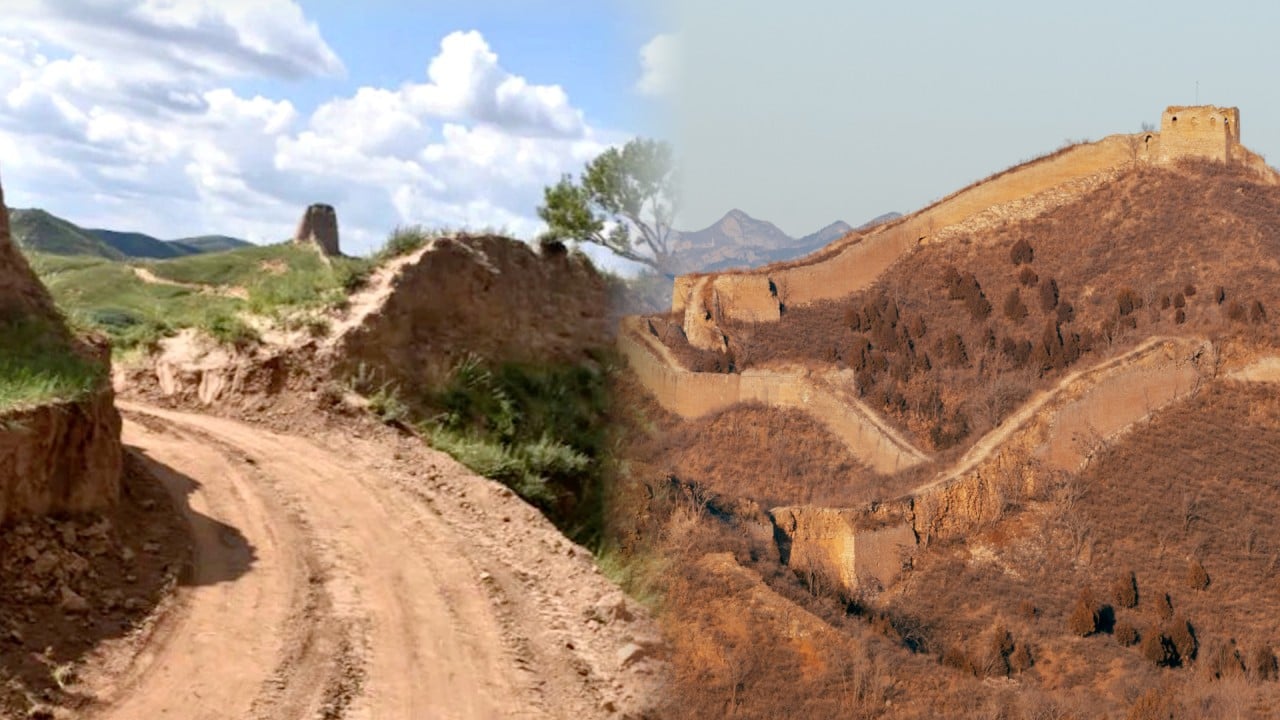“Our study proves that the colonisation and development of biocrusts exert long-term and multifaceted protections against erosion on the Great Wall through enhancing mechanical stability and reducing the erodibility of rammed earth,” the team from China, Spain and the United States wrote in an article published in the peer-reviewed journal Science Advances on Saturday.
Vegetation was usually deemed as detrimental in monument conservation because it could destroy a structure via its root activity and biodegradation. But this study along with previous ones over the past three decades have challenged the traditional viewpoint.
The current study began in 2021 when the group, with more than two decades of experience studying biocrusts in arid areas, came across the development of biocrusts – only a few centimetres deep on the surface soil – during fieldwork at the Great Wall.
They found that cyanobacteria and moss biocrusts covered two-thirds of the studied sections. Compared with bare rammed earth, the biocrust-covered sections showed greater stability and lower erodibility, the study found.
Lead author Xiao Bo, a professor at the China Agricultural University who specialises in soil physics, said as well as considering the use of artificial inoculation of biocrusts to protect the Great Wall, future research work could explore its potential applications in other scenarios.
Examples include fixing and controlling sand in desert areas, preventing and controlling water and wind erosion in farmland, protecting archaeological sites, restoring vegetation and ecology in mining areas, restoring heavy metal-contaminated soil, and protecting road slopes, according to Xiao.
“We should study the functions and ecological processes of biocrusts in arid ecosystems throughout China and the world more comprehensively,” he said.
Southeast Asia’s water risk on track for 1,000-year high: China-led study
Southeast Asia’s water risk on track for 1,000-year high: China-led study
Scientists have found that ancient civilisations used natural organic additives to strengthen their constructions.
In April, a team of scientists in Spain discovered an ancient Maya technique that used organic plant materials to reduce weathering in lime plasters.
The Mayan civilisation flourished in modern-day Mexico and Central America around the years 250-900AD. It was known for its temples and great stone buildings – and produced some of the most durable lime plasters on Earth.
Elsewhere, plant extracts, sticky rice, fruit juices, oils, animal fats, blood or beer have been previously found to be added to slaked lime to improve the properties of lime mortars and plasters, the researchers said in the paper.


